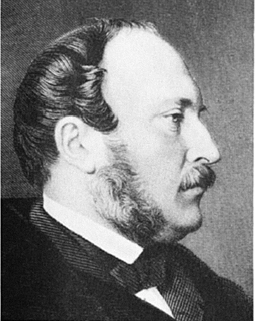According to George Clifford Whitworth (An Anglo-Indian Dictionary: A Glossary of Indian Terms Used in English and of Such English or Other Non-Indian Terms as Have Obtained Special Meaning in India), “juzail (Pashto, corrupt form)” is a “large heavy rifle, with an iron forked rest, used by Afgháns; it carries generally an ounce ball, which is put into the barrel naked.” The ball must be “hammered a good deal to get it home.” Philip Weller, in “On Jezails and Things Afghan,” describes the word as “a rather loose, generic term, similar in nature to the word ‘musket,’ in that it could be applied to lots of different sorts of weapons, with one of the only common features being the muzzle-loading aspect.” It may be derived from the Arabic word for “big”: jazil and, in the plural, jaza’il; the person armed with a jezail is a jaza’ilchi. In Eighteen Years in the Khyber (1900), the Anglo-Indian soldier and administrator Colonel Sir Robert Warburton (1842–1899) speaks of soldiers called Jezailchies. And, in Rudyard Kipling’s 1900 poem “The Last Suttee,” “All night the cressets glimmered pale / On Ulwar sabre and Tonk jezail.”

Jezail rifle.
Courtesy of Richard D. Lesh, BSI, and the Maiwand Jezails, a scion society of the BSI.
16 “Ghazi” was an honorific applied to veteran Muslim warriors, particularly for those who had fought successfully against infidels. They were reputed to use torture and painful methods of execution—hence Watson’s description of them as “murderous.”
17 Stephen M. Black contends that Watson was killed, not wounded, at Maiwand, and that “Murray” (whom he identifies as Pvt. Henry Murrell, Serial #1555, Rifleman, 66th Berkshires) took his identity. Murrell’s guilt for this masquerade, Black argues, induced all of the errors of dates, places, and names rampant throughout the Canon, including his absentmindedness about his own wound.
18 Probably what is now termed typhoid fever, which Watson could have contracted by ingesting food or water contaminated with the bacterium Salmonella typhi. Food may be contaminated by flies (who pick up the bacterium from human waste), by infected persons who may have handled the food, or by polluted water that has been used for cleaning. Typhoid fever unfortunately remains a common disease worldwide, with an estimated 10 percent fatality rate, and claimed the lives of many famous victims during the nineteenth century and early twentieth century, including Rudyard Kipling, Wilbur Wright, Franz Schubert, and Albert of Saxe-Coburg-Gotha, Victoria’s consort (although later diagnosticians suggest Albert may have actually died from stomach cancer).

The Prince Consort, Albert of Saxe-Coburg. Oscar G. Reylander (ca. 1860)
It was not until 1907, with the identification of the infamous “Typhoid Mary” Mallon, a cook in a private home, as the source of an outbreak of typhoid fever, that American health officials realised that a healthy person, with no symptoms of the disease, could be a deadly carrier. Initially confined to a government-controlled island in the Bronx’s East River, after a legal struggle, Mallon won her release, agreeing to give up her occupation and report to health officials regularly. She proceeded to vanish for five years. When an epidemic of typhus broke out in a Manhattan maternity hospital, Mallon was discovered working there as a cook under a false name. She was again confined to the island facility, where she remained until her death twenty-three years later. The infection of forty-seven people, three of whom died, is attributed to Mallon. At the time of Mallon’s first arrest, there was at least one other known carrier in New York, Tony Labella, who had caused more cases of typhoid (120) and deaths (seven) than Mallon. Labella fled to New Jersey and was no more cooperative than Mallon.
Watson’s symptoms would have included fever, coughing, loss of appetite, diarrhea or constipation, possible intestinal haemorrhaging, and a skin rash of rose-coloured spots. A vaccine was not available until 1898, too late to aid Watson. A British soldier’s risk of dying from a disease such as typhoid was often greater than his risk of dying in battle.
19 Where were Watson’s “kith and kin”? Watson’s father, J. Watson, had been dead “many years” by 1888, and his elder brother had died of drink shortly before the events recorded in The Sign of Four (see text accompanying note 32 to that novel, below). There are numerous suggestions of Watson’s family home, including Hampshire, Berkshire, Northumberland, Ireland, Scotland, Australia, and even America. In “Watson: Treason in the Blood,” Hartley R. Nathan and Clifford S. Goldfarb present evidence that Watson may have descended from two of the leaders of the 1816 Regency Rebellion, James Watson and his son James (Jemmy) Watson, who subsequently fled to America. Our Dr. Watson was in fact also named James, point out the authors (see “The Man with the Twisted Lip”), but evidently changed his name to John to avoid the stigma of identification with his grandfather and great-grandfather. This thesis explains Watson’s lack of British family and suggests an American origin. In contrast, in “Art in Whose Blood?,” this editor proposes a relationship with Scottish portrait painter John Watson Gordon (real name: John Watson).
20 This would have been worth about U.S.
1 comment